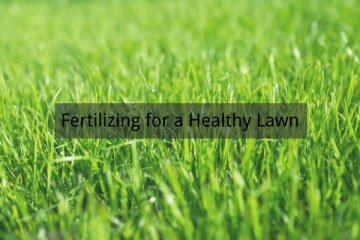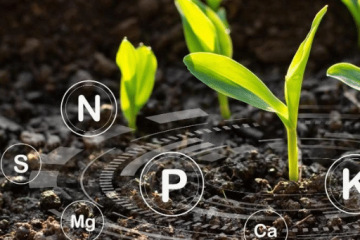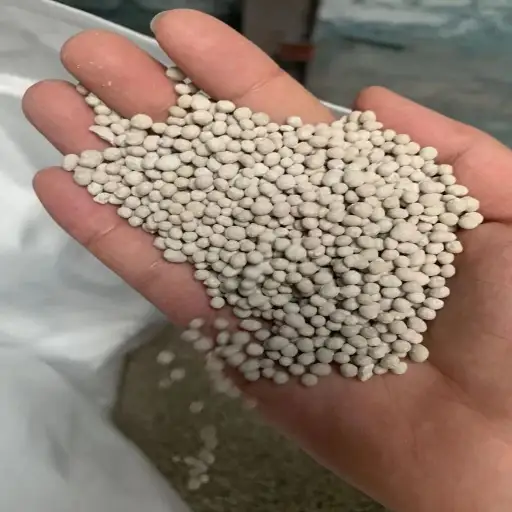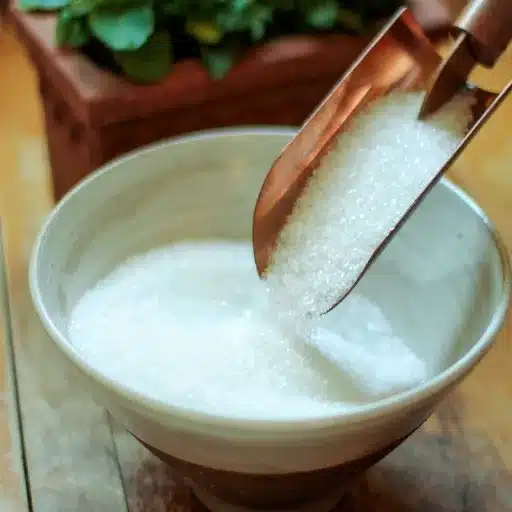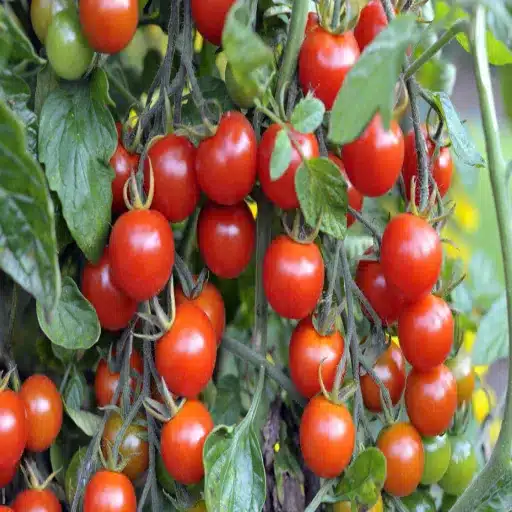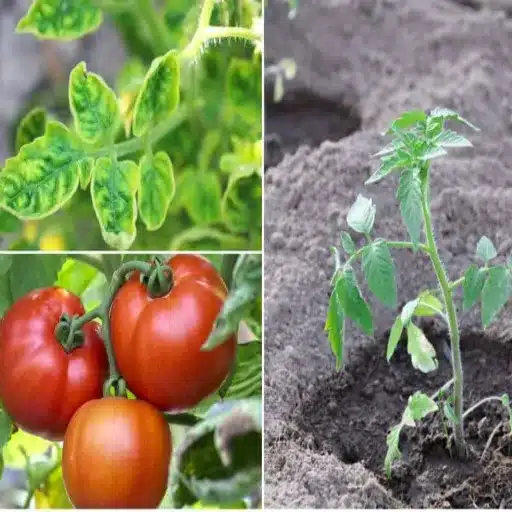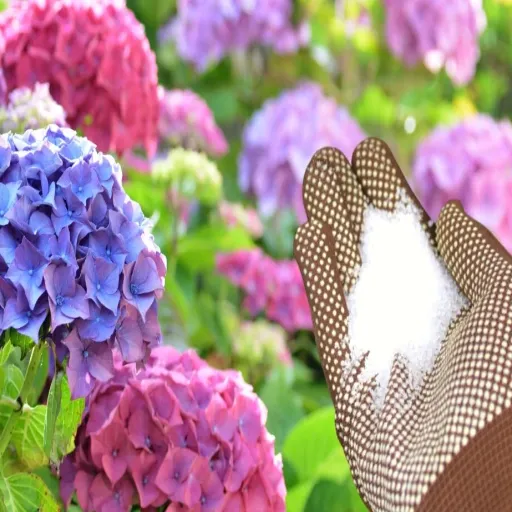Ensuring optimal plant growth and robust yields begins with understanding the nutrients your plants need to thrive. Fertilizer plays a pivotal role in this, and the NPK 12-24-12 blend is a prime example of a highly targeted solution for specific agricultural and horticultural needs. This article will serve as your comprehensive guide to 12-24-12 fertilizer, breaking down its nutrient profile and explaining why it is especially effective for certain plants and growth stages. Whether you are a seasoned farmer or a home gardener, this resource will provide the technical insights you need to make informed decisions about incorporating 12-24-12 fertilizer into your soil management practices.
Product Description of 12-24-12 Fertilizer
Nutrient Composition and Ratio
Choosing fertilizer 12-24-12 means that it has equal and perfectly balanced amounts of nitrogen (12%), phosphorus (24%), and potassium (12%). These three macronutrients help plants grow and develop, each serving a different function according to the plant’s life stage. This particular formulation will allow targeted support to those plants placing heavier emphasis on phosphorus to help develop roots and early growth, with adequate nitrogen and potassium to maintain general vigor in the plant.
Nitrogen (N) contributes 12% to the 12-24-12 fertilizer composition. It is essential in vegetative growth, stimulating chlorophyll production, the photosynthesis process, and the resultant lush, green foliage. This moderate level of nitrogen is beneficial in avoiding excessive follicle growth that discourages flowering in some crops and plants.
For this fertilizer, more P means more is available for the roots to absorb. At 24%, it is very high and supports root growth, flowering, and seed formation. So, the great amount of phosphorus in the 12-24-12 formulation makes it very suitable for new crops, newly established seedlings, or plants in the flowering stage. Meanwhile, the 12% K improves plant vigor, resistance to diseases, and drought tolerance, and is thus considered an essential nutrient to ensure that the plant grows strong and healthy throughout its lifetime. These balanced K levels cater to the complementary needs of nitrogen and phosphorus to give a balanced fertilization solution that fits a number of soil and crop conditions.
Understanding NPK 12-24-12 Fertilizer
NPK 12-24-12 type fertilizer is made for the cause of ultimate development and productivity during the critical stage of plant development. The 24% P concentration, being high, imparts the root expansion and flower readiness and so is more suited for early plant establishment and when plants are switching into the reproductive phase to ensure stronger root systems and good flower set.
For initial growth, hence having maximum importance in leaf and stem development, 12% N dealt with the need during this stage of growth. Nitrogen is quite critical for green foliage and maintains energy production, so plants will have strong early biomass, which is very important to see through environmental stress on the pathway of continuous growth.
The potassium (K) at 12% has an important role in fostering resilience in plants. Potassium aids the plants in efficiently managing their water use, in resisting diseases better, and in transporting carbohydrates. These features ensure that the plants are healthy and strong, and hence contribute highly to good-quality yields. Such a composition is suitable for field crops, vegetables, and ornamentals, depending upon the soil types and farm practices.
Importance of Balance in Soil Nutrition
When a soil is optimal for plant health and the enhancement of agricultural yield, it needs to be composed of a perfect nutrient balance. Plants can efficiently absorb the nutrients they need for growth, reproduction, and adaptation to environmental stresses if these nutrients coexist in favorable proportions. An imbalance of nutrients, such as excess nitrogen or an insufficient amount of potassium, can disrupt physiological activities in plants, causing reduced growth, lower yields, and poor resistance to pest infestations and diseases. Several studies show that crop yields have diminished considerably over generations due to very nominal nutrient deficiencies.
A balance of soil nutrition not only impacts the development of individual plants but is also a long-term factor concerning soil health and sustainability. Overapplication of nutrients causes leaching, which will cause contamination of groundwater, whereas nutrient deficiencies cause depletion of the soil’s natural fertility. Diagnostic approaches such as soil testing can help the farmer identify with precision the nutrient levels that are present. Such information can be used in detailing fertilization schemes that maintain crop growth while reducing wastage and environmental detriment.
Effective nutrient management involves incorporating practices such as crop rotation, the use of organic manure, and controlled-release fertilizers. These methods maintain an adequate concentration of vital macronutrients such as nitrogen (N), phosphorus (P), and potassium (K), in addition to some essential micronutrients, but never so high as to cause toxicity nor so low as to cause deficiency. A balanced soil ecosystem enhances the biodiversity of the soil ecosystem, thereby promoting microbial activity and improving the overall resilience of the agricultural system for consistent and sustainable productivity.
Benefits of Using 12-24-12 Fertilizer

Promoting Root Development
The fertilizer 12-24-12 represents tries to balance a fertilizer that fosters healthy root development during those early phases of development. The increased phosphorus content of this blend is important because, in essence, phosphorus is the energy transfer and storage within a plant, with an important constituent of an ATP (adenosine triphosphate) molecule. Phosphorus helps in the division and elongation of cells in root tissues so that plants may anchor down with much stronger and deeper roots. In the very initial growth phase itself, a strong root system is needed for efficient water and nutrient uptake. Phosphorus-lacking soils are found to hamper root growth, making phosphorus-rich fertilizers such as 12-24-12 very necessary to address such deficiencies.
Yet one more advantage of 12-24-12 is its balanced nitrogen (N) and potassium (K) content, which complements phosphorus to optimize the root system. Nitrogen builds overall plant vigor and encourages the production of enzymes required for cell activity; potassium strengthens root structures by regulating water absorption and resisting drought. This pairing of macronutrients ensures that the plant can develop an extensive root system and maintain its functional efficiency, even under adverse conditions. It has been firmly proven that plants treated with a balanced N-P-K fertilizer show greater biomass production and nutrient absorption efficiency.
Secondly, 12-24-12 fertilizer encourages the beneficial microbes in the soil that contribute to root health and nutrient cycling. The presence of phosphorus increases microbial activity by forming symbiotic relationships with those microbes and plants with the help of mycorrhizal fungi. This fungal species colonizes plant roots, eventually extending the effective surface area of roots, which allows for greater nutrient and water uptake. Integrating 12-24-12 fertilizers into soil management helps agricultural systems remain productive sustainably while supporting biological processes on which a healthy root ecosystem can survive.
Supporting Flowering and Fruiting
The 12-24-12 fertilizer formula closely attends to the needs of plants during flowering and fruiting. The balanced nitrogen-phosphorus-potassium (N-P-K) ratio makes sure all the main macronutrients are available for the final functioning of vital physiological processes. Phosphorus (P), a good 24% of the mix, is especially crucial in these stages by providing energy transfer in adenosine triphosphate (ATP) synthesis, affecting bloom formation and fruit DNA. Potassium (K), with an incidence of just 12%, develops flower quality and aids the translocation of sugars and nutrients needed for fruit development, while maintaining cell integrity under stress conditions imposed by drought or high salinity.
Published research points towards an increase of 20-30% in total fruit yield per hectare by the correct application of fertilizers such as 12-24-12 in correct growth stages, particularly of fruit crops like tomatoes, peppers, and strawberries. The reason behind this is that phosphorus stimulates the expansion of roots, whereas potassium has a role in carbohydrate metabolism. Besides, nitrogen (12%) induces moderate vegetative growth so that the plant keeps enough leaf area for photosynthesis and does not divert the resources to reproductive structures.
For maximum results, fertilizer application during the early vegetative stage must be repeated at pre-bloom stages to maximize nutrient uptake efficiency. Recent advancements in the slow- and coated-release fertilizer technologies further sustain nutrients by reducing leaching and runoff, ensuring carrying zones remain in an optimum nutrient balance. Combining this formula with soil testing data and localized environmental conditions tailors the nutrient management approach, which is essential for maximizing floral and fruiting potentials in modern agriculture.
Improving Overall Plant Resilience
Improving the resilience of plants against the stresses of biotic and abiotic factors goes hand-in-hand with advanced agricultural methods, molecular biology, and environmental management. Biotic stresses like predominant utilization of parasites, diseases, or fungicides lower the natural growth of any crop unless arrested timely manner. Hence, in IPM systems, the biocontrolling agents are used in unison with crop rotation and chemical application, which in turn is used only on an as-needed basis. Beneficial microbes as mycorrhizal fungi and Bacillus subtilis, were reported to be greatly helpful in improving root defense mechanisms against pathogen attacks. Using pest-resistant varieties generated through genetic engineering or conventional cross-breeding methods is another alternative to enhancing plant defense against mechanical attacks while retaining high yields.
Depending on factors, abiotic stresses such as drought or extremes of temperature, or whether it concerns soil salinity, subject perpetually rampaging agricultural systems across the globe. The rare introduction of drought-tolerant cultivars and convenient bioengineering interventions, such as increased production of osmoprotectants like proline, have enabled crops to resist water stress. In the same vein, exogenously applied biostimulants, such as amino acids or seaweed extracts, or inoculated PGPR, greatly reduce oxidative stress exacerbated by inimical climatic conditions. An adaptation in irrigation technology serves better than the siting system or drip irrigation, or could incorporate moisture sensors to enhance water-use efficiency and prevent the plant from stress.
Such resilience is also crucially connected to soil health and agroecology. Research interdisciplinary fields emphasizing varied crop rotation systems with cover crops, which benefit microbial ecosystems that augment levels of organic matter, improve soil structure, and improve nutrient cycling in the soil. Furthermore, phenotyping and omics technologies-kinds genomics, transcriptomics, and metabolomics placing stress on hunting for traits for candidate cultivars that suit agro-environmental settings. These modern technologies emphasize sustainability and adaptation to allow plants to withstand adversity and forage from a wide range of stress scenarios in directions that improve the agricultural product toward global food security.
Application Methods for 12-24-12 Fertilizer
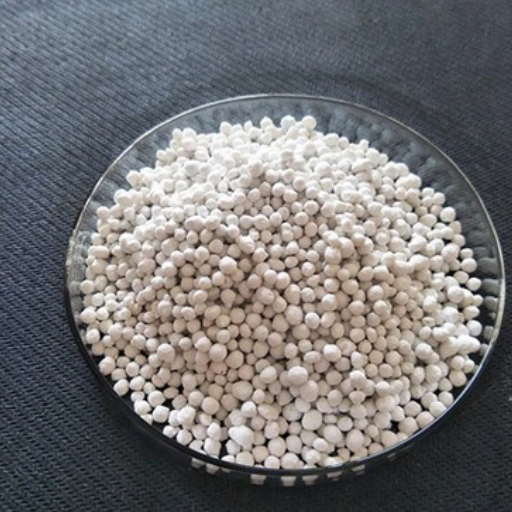
When to Apply for Optimal Results
Depending on the crop and agricultural system, the time of application of 12-24-12 fertilizer gains importance in maximizing efficiency. Being a balanced type of fertilizer, it affords a mixture of nitrogen, phosphorus, and potassium, making it eminently suited for the early growth stage of plants. Most industrialists advocate this fertilizer being applied right at the time of planting because the phosphorus content, given by the middle figure of 24 in the formula, speeds up the establishment and development of roots. Since phosphorus has a low mobility, putting it near the root zone enables young plants to extract it readily during their critical growth phases.
The optimal window for the application will heavily depend upon seasonal considerations as well. For crops planted in spring, the fertilizer 12-24-12 should preferably be worked into the soil before or during sowing to develop early vigor. In cool-season crops or fall planting situations, such fertilizers should be applied in late summer or early fall to allow for vigorous root growth to prepare the plants for the cooler temperatures. Soil temperatures and moisture levels must also be considered at the time of application so that they do not interfere with nutrient availability and uptake.
Traditional methods of agronomy applied alongside soil tests allow for more precise application of 12-24-12 fertilizers. By determining nutrient profiles of the soils beforehand, the farmers are made acquainted with whether the soil contains sufficient nitrogen, phosphorus, and potassium. Thus, this approach excludes incidents of possible over-application and the associated environmental risks of runoff; instead, it feeds the crops where feed is required for optimum yield. Moreover, coalescing with the latest sustainable practices in modern farming are precision agriculture technologies that allow fertilizer to be evenly applied by use of GPS systems, placing the fertilizer at the exact depth and spacing required.
Application Techniques: Broadcasting vs. Side-Dressing
Broadcasting and side dressing are major techniques in fertilizer application. Each technique has its disadvantages and advantages, depending on the crop type, growth stage, and adoption of good management practices under different spatial and temporal variations in soil properties. Broadcasting is the procedure where fertilizer is uniformly distributed on the soil surface, usually by hand or mechanical spreaders. This method is mostly used for pre-plant applications of large growing crops because it provides an even supply of nutrients to the field. However, one of the disadvantages would be a higher loss of nutrients through runoff and volatilization from the time of application to incorporation into the topsoil layer.
Side-dressing, however, is a more direct fertilization method that entails application directly beside crop rows in active growth. This technique avoids nutrient wastage and favors unitarily nutrient delivery in the plant root zone, where uptake would be sufficient. Side-dressing during the critical growth stages of corn or vegetable crops ensures that nutrients are available where and when they are needed for proper growth.
The recent breakthroughs, including VRA systems and sensor-based equipment, are changing how fertilization and side-dressing are performed. Using these technologies, the farmer can adjust the rate of application in real time on the basis of soil fertility data, crop requirements, and field variability. It is said that combining site-specific management with these application methods may improve nutrient use efficiency by up to 25%, thereby reducing cost and environmental impact.
Avoiding Over-Fertilization Issues
I take particular care in precision agriculture to ensure that fertilizer is not over-applied by getting precise, data-based information on the nutrient needs of crops. Tools such as soil testing, remote sensing, and GPS-guided systems enable me to apply fertilizers while considering the spatial variability within fields, thus putting nutrients in the positions where they are needed, thereby avoiding over-application, which may pose threats to the environment.
Split application and variable rate technology (VRT) are practices I also employ that fine-tune fertilization to meet the demands of particular crop growth stages. Split application allows for the incremental application of nutrients during critical growth phases, thereby facilitating optimal uptake and reducing nutrient loss through leaching or runoff. On the other hand, VRT enhances efficiency by adjusting application rates on the fly, utilizing field-specific data like crop condition and soil fertility.
I also take care of integrating a crop rotation system and cover crops in my management system for improving the soil structure and nutrient cycling, naturally. That is, these practices allow me to reduce the application of chemical fertilizers and to maintain soil health in the long term. Plus, with the ongoing monitoring of these practices, I secure optimized use of fertilizers, thereby generating cost savings while avoiding environmental issues arising from over-fertilization.
Suitability for Different Plants and Crops
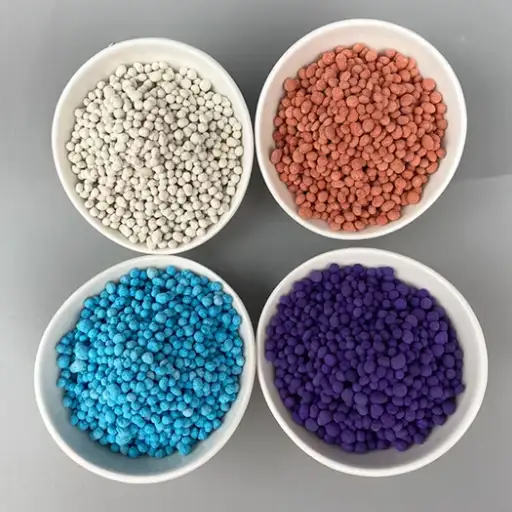
Using 12-24-12 in Vegetable Gardens
One of the best options for using a 12-24-12 fertilizer blend in vegetable gardens is to optimize plant growth, especially during the early stages of development. This formulation has 12% nitrogen (N), 24% phosphorus (P), and 12% potassium (K), with a nutrient composition balanced for crops whose prime requirements are for root development and fruiting possibilities. Phosphorus takes precedence in this ratio because it primarily supports root establishment and energy transfer within plants, which is most critical at the time of germination and early seedling development.
Generally, 12-24-12 fertilizer may be applied during planting or used in a side dressing application at the growing stage. For example, this phosphorus boost positively influences crops like tomatoes, peppers, and beans in flowering and fruiting. Application rates must be scaled and watched carefully, as imbalanced application may cause nitrogen excess, which is not good for fruit in the sense that it promotes vegetative growth.
Because misuse of fertilizers can cause leaching of nutrients and other environmental problems, such as pollution of waterways, adherence to regional agricultural guidelines and recommended fertilizer application rates should be followed. The 12-24-12 type fertilizers, in conjunction with sustainable practices such as crop rotation and organic composting, can improve soil health, thus ensuring productive capacity and environmental balance of vegetable gardens over time.
Ideal for Flowering Plants and Turfgrass
For a bloom of flowering plants and growth of turfgrass, they require somewhat different and overlapping nutrients. For the flowering plants, phosphorus (P) is most essential in supporting root development and flowering. Fertilizers such as the 12-24-12 formulation cater specifically to this requirement, with the value for phosphorus set higher to fuel the blooming cycle. Putting nitrogen inputs for turfgrass creates lush green foliage and promotes growth. Balancing out this nitrogen, therefore, helps keep turfgrass dense and green through the seasonal changes.
For fertilization activities to be more practical and applied, the factors guiding pH, moisture content, and the timing of applications must be considered. Studies provide evidence that fertilizers should be applied during periods when plants grow actively, e.g., early spring or late fall for flowering plants and from spring through summer for turfgrass. By doing so, nutrients get absorbed into the plant and, possibly, waste of resources is kept to a minimum. Moreover, combining soil testing in the management plan allows gardeners and managers of any turf to apply nutrient amendments exactly based upon the deficiency tests, preventing over-fertilization and causing ecological problems.
The combination of field-proven practices and contemporary, evidence-based protocols can enable care and maintenance programs for flowering plants and turfgrass to be sustainable and valid in promoting growth responsibly towards the environment.
Comparing with Other NPK Compound Fertilizers
12-24-12 fertilizer is compared with other NPK fertilizers such as 10-10-10, 15-30-15, and 13-13-13, with a focus on their nutrient ratios and particular uses.
|
Fertilizer |
Nutrient Ratio |
Best For |
Key Benefit |
Application |
|---|---|---|---|---|
|
12-24-12 |
12-24-12 |
Early growth |
Root, flower |
Early season |
|
10-10-10 |
10-10-10 |
General use |
Balanced growth |
All-purpose |
|
15-30-15 |
15-30-15 |
Flowering plants |
High phosphorus |
Flower boost |
|
13-13-13 |
13-13-13 |
All plants |
Equal nutrients |
Versatile |
Potential Drawbacks and Considerations

Risks of Nutrient Imbalance
Nutrient imbalance in the soil, usually caused by improper fertilization, may result in huge agricultural and environmental problems. Too much nitrogenous fertilizer causes nutrients to run off and contribute toward the eutrophication of water bodies and algal blooms that diminish the oxygen concentrations and harm aquatic life. Phosphorus or potassium inadequacy causes plant growth restrictions and, subsequently, poor yields and crop quality.
One of the underlying causes of nutrient imbalance is the fertilizer nutrient ratio. Application of high-nitrogen fertilizer such as 12-24-12 may give way to excessive foliage growth in preference to flower or fruit production. Likewise, all-purpose fertilizers may overlook very specific deficiencies, like phosphorus for root development or potassium for disease resistance. Hence, a soil test is essential before fertilizing to know the soil composition and avoid problems of nutrient excess or nutrient deficiency.
Nutrient imbalances, if prolonged, can notably deteriorate soil health by altering pH or causing nutrient lockup when nutrients are rendered unavailable for plant uptake. These disturbances dictate that fertilizer applications be made only based on a scientific diagnostic analysis of deficiencies that need correction, rather than applying a go-to blanket application of any single fertilizer. Sustainable means for nutrient replenishment include supply through composting and crop rotation.
Environmental Impact of Fertilizer Use
The environmental issues related to pollution stemming from fertilizer application cross multiple entities-from the soil, to water, and atmospheric systems. One major concern lies with the runoff of nutrients, especially nitrogen and phosphorus, into surface water, thereby causing eutrophication. Algal blooms bloom faster with this process, killing aquatic life while depriving oxygen and hence forming dead zones.
Gaseous emissions in the effect of excess nitrogen application possess particular prominence for nitrous oxide (N₂O), a gas with much global warming potential, almost 300 times greater than that of carbon dioxide. In addition, fertilizer application tends to acidify soils gradually; this alters the chemical balances in the soil and threatens long-term soil productivity unless mitigated by some form of sustainable soil management techniques. About 50% of all nitrogen fertilizers applied are not utilized by crops, which only aggravates the environmental problems.
The impact could be reduced by encouraging all advanced agriculture technologies, incorporating, for instance, precision fertilization with geo-spatial data and soil testing, application of organic amendments with biochar, amongst others, that act to promote microbial diversity in soils so that a reduction in synthetic inputs can be realized through a balanced and environmentally friendly method for crop nutrition.
References
Frequently Asked Questions (FAQ)
Q: What is 12 24 12 fertilizer used for?
A: 12 24 12 fertilizer is widely used for providing essential nutrients to various crops and soil types. It contains a balanced nutrient ratio, with higher phosphorus levels that are beneficial for root development, flowering, and fruiting in plants.
Q: How does 12 24 12 fertilizer compare to 15-15-15 fertilizer?
A: While 15-15-15 fertilizer provides an equal balance of the three primary nutrients, 12 24 12 fertilizer has a higher phosphorus content, making it more suitable for promoting flowering and fruiting in plants, particularly in fruit trees.
Q: What is the release rate of 12 24 12 fertilizer?
A: The release rate of 12 24 12 fertilizer can vary based on its formulation. Some versions are slow-release, allowing for nutrients to dissolve gradually and improve the utilization rate by plants over time.
Q: Can 12 24 12 fertilizer be used for lawns?
A: Yes, 12 24 12 fertilizer can be used on lawns, especially if they require higher phosphorus levels to encourage root establishment and overall growth. However, it’s important to follow recommended application rates for optimal results.
Q: What are the primary nutrients in 12 24 12 fertilizer?
A: The primary nutrients in 12 24 12 fertilizer are nitrogen, phosphorus, and potassium. Each plays a crucial role in plant health, with nitrogen promoting leafy growth, phosphorus supporting root and flower development, and potassium aiding overall plant function.
Q: Is 12 24 12 fertilizer suitable for foliar application?
A: 12 24 12 fertilizer can be used for foliar application, particularly when formulated as a soluble product. This method can deliver nutrients directly to the leaves, enhancing absorption and promoting faster growth.
Q: How does 12 24 12 fertilizer improve nutrient availability?
A: 12 24 12 fertilizer improves nutrient availability through its solubility and balanced nutrient ratio, which allows plants to access essential nutrients more efficiently, enhancing their growth and development.
Q: Can 12 24 12 fertilizer be used in combination with other fertilizers?
A: Yes, 12 24 12 fertilizer can be used in combination with other fertilizers, such as urea or magnesium additives, to tailor nutrient delivery according to specific plant needs and soil conditions.

